 "QUANTUM SHOT" #286
"QUANTUM SHOT" #286Article by Avi & Rachel Abrams - link
The way is narrow & the path is steep, indeed
Dizzying heights, mist and isolation seem to fuel humankind's spiritual quests, and it is no surprise that we find monasteries suspended above deep valleys where the air is clearer even when it is foggier.
Partly castles, partly unconquerable fortifications, these ancient sites have one thing in common - there are built on steep cliffs, often accessible only by secret paths, and provide the utmost seclusion and serene surroundings, so valued in true spiritual devotion.
Some of these monasteries we've covered already. See, for example Sumela in Turkey:

and a hiking path to the sacred places on Mt. Huashan in China:
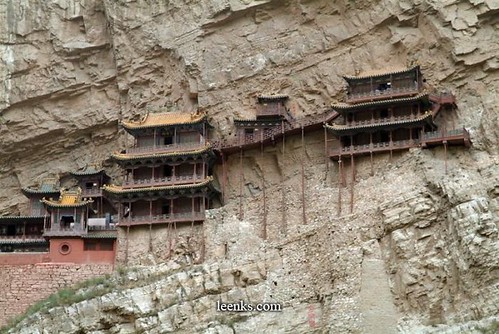
Now we're going to add more pilgrimage destinations to the list. The accessibility of some of these places has considerably improved due to the relentless progress of civilization, which is perhaps not a good thing for those seeking the original peace and quiet.
1. Sigiriya, Sri Lanka - The Lion Mountain
Build on a "magma plug" outstanding rock, a remnant of an ancient volcano, the sacred city of Sigiriya contains the ruins of the palace and the temple, dating back to 500 AD. Even older times (about the 3rd century BC) saw this rock as a site for a mountain monastery of the devotees to the Buddhist Sangha. Their caves still pepper the vertical walls, hardly accessible in their overhanging 370m height.

(image credit: Sri Lanka Island Tours)




(images credit: Travellanka)
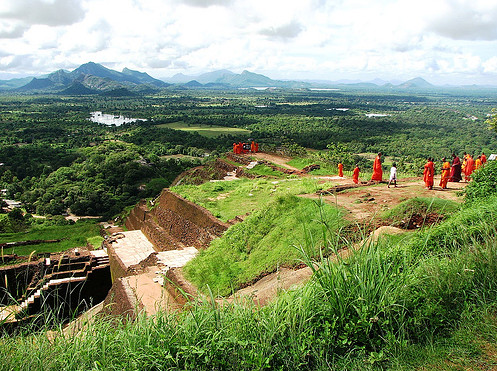
(image credit: Hanako Satou)
Some rocks and the Sigiriya City in the background:
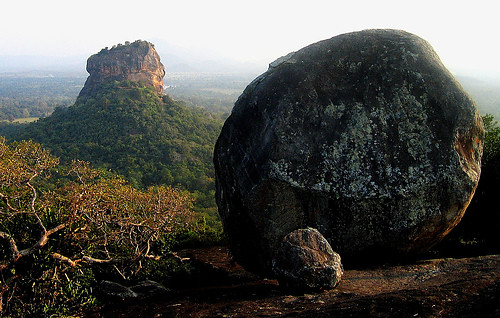
(image credit: Chinthaka Senanayake)
The whole western face of the rock (140 meters long and 40 meters high) at one time has been covered with paintings: "The whole face of the hill appears to have been a gigantic picture gallery... the largest picture in the world perhaps" (quote from John Still in 1907). Colorful frescos were painted with the special mixture of eggyolk and wild honey, and depict royal princess' procession and exotic offerings. A few frescos were obliterated by the zealous monks, so as not to disturb meditation.


(images credit: Travellanka)
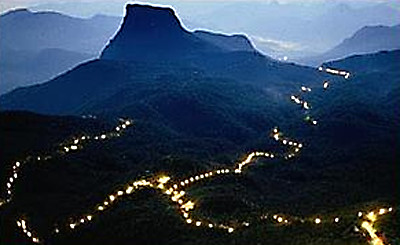
Steep cliffs drop on all sides, commanding an ultimate view of surrounding plains & mountains:
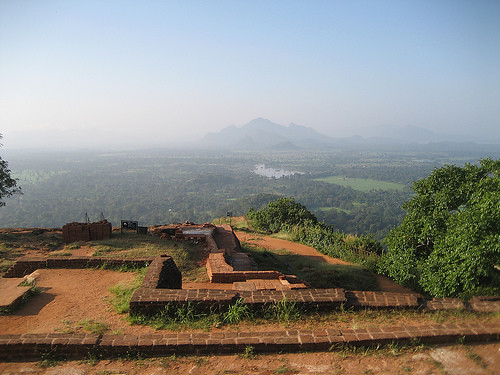
(image credit: Munir Squires)
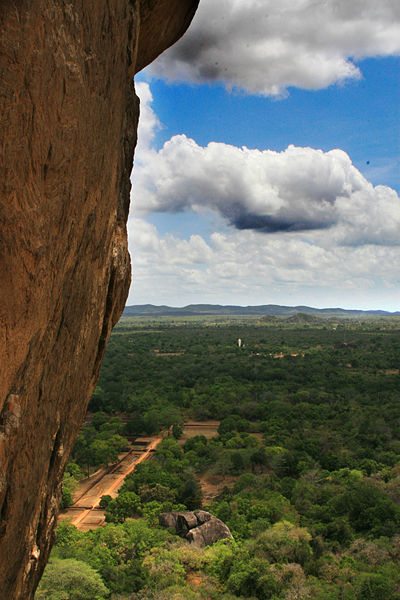
(image credit: Wiki)
Stairs leading to the Mirror Wall.
Literally, "Stairway to Heaven" for the ancient monks.

(image credit: Wiki)
The sacred mountain did not remain sacred for all the years of its history. The Pleasure Palaces build by the "mad king" Kasyapa held the "health spa" and the harem for his 500 wives. At one time it was also a capital city of Ceylon. By the time Arthur Clarke wrote about it in his "Fountains of Paradise" it was a secluded monastery again. (obviously not so secluded any more due to the hordes of tourists. Besides it is UNESCO site with hordes of archaeologists, as well)
Don't look down...
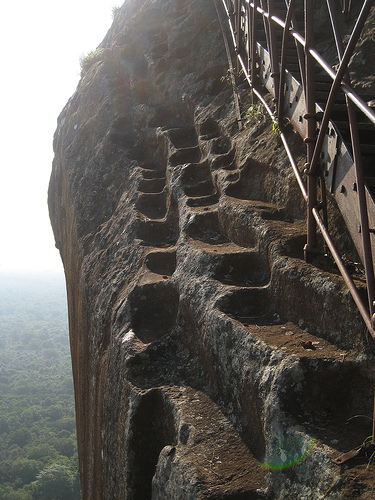
(image credit: Munir Squires)
More local danger:

(image credit: Ben D. Johnson)
2. Taktshang - Tiger's Nest Monastery in Bhutan
The Tiger's Nest monastery, or Taktshang, in Bhutan, clings to a cliff 2300 feet above the Paro valley floor. The legend behind the name is that Padmasambhava flew to the site of the monastery on the back of a tiger. However, the rest of us must either hike or ride a mule along steep and narrow paths to reach the monastery and temples.


(image credit: Leo Palmer Photography)
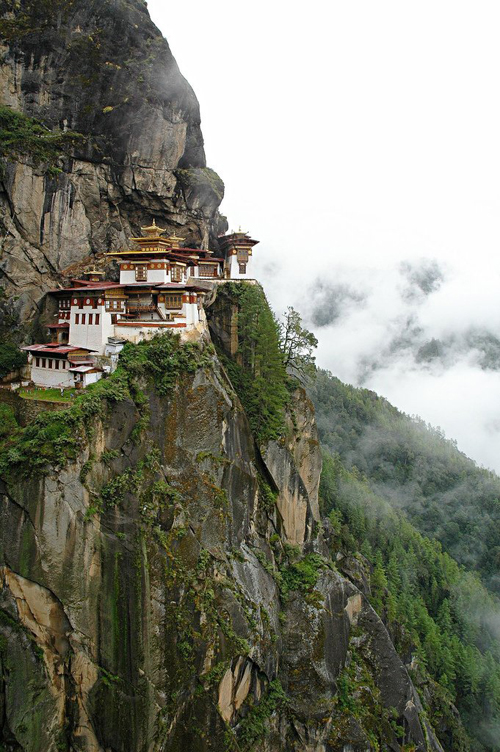
(image credit: Douglas J. McLaughlin)


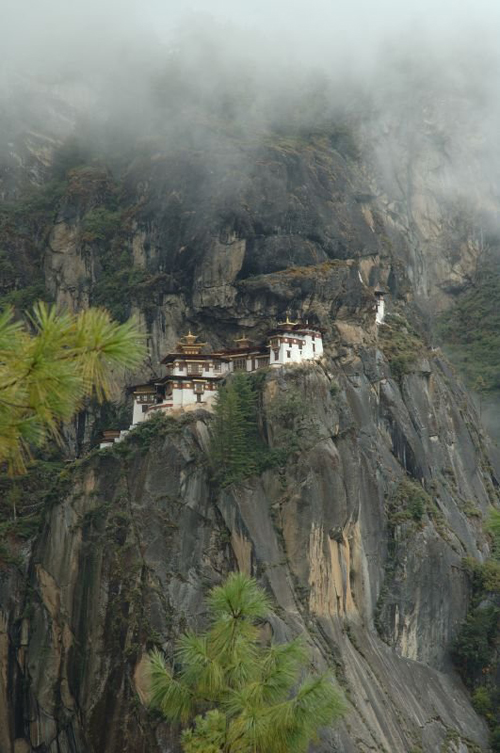


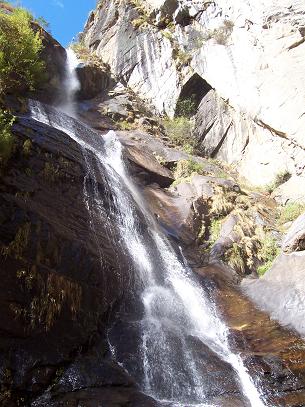
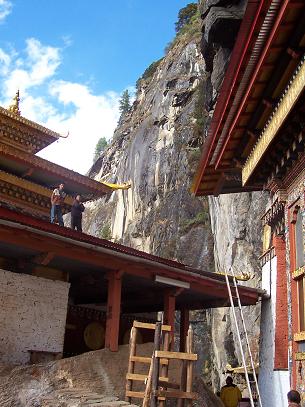
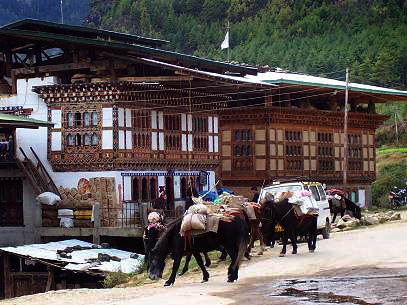
View down to the valley below:
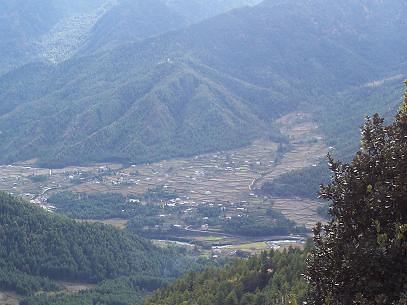
(images credit: Allyson and Dominic's Travel Page)
Some hikers have gone missing on the way up, presumably losing their balance and slipping off the path. There is pretty much nothing between you and the bottom of the valley.
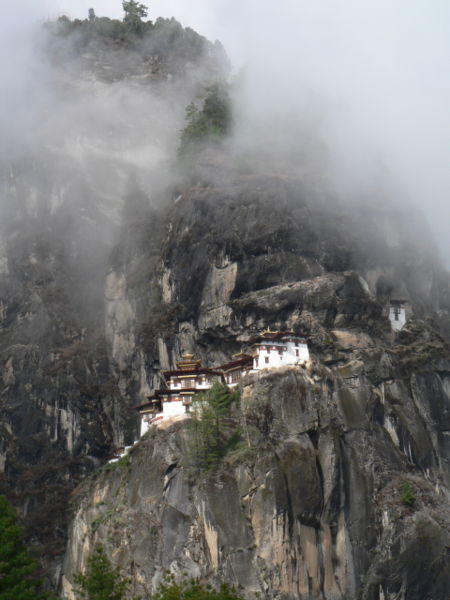
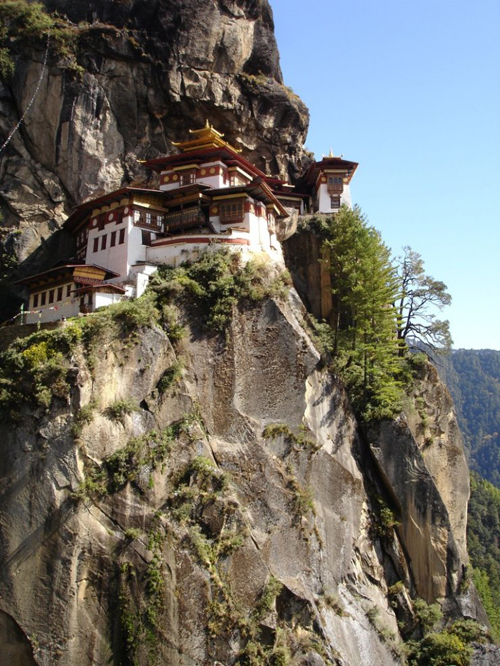

(other sources: In the rest of the world, ochevidec)
The surroundings of Bhutan's Tiger Nest monastery are just as fascinating:
A typical house on the way to monastery:

Medieval castle (or Dzong) overlooking the Gaza village:
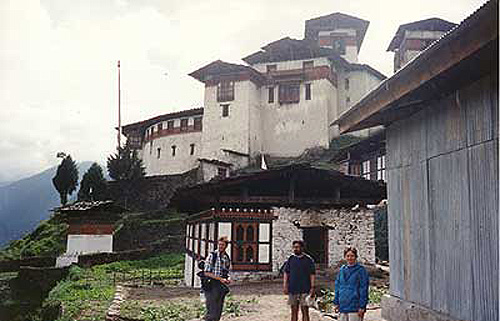
(images credit: Tom Gibson)
3. Meteora, Greece - "Build Your House on a Rock"
Our third monastery is situated on some curious cliff formations in Greece, in the plains of Thessaly. Some of these formations reach 1800 feet above the plain. It was originally a complex of two dozen monasteries, dating back to the 14th century. Six of them are still standing today. Meteora means ""suspended in the air" or "in the heavens above":

(image credit: Leonidas Spetzos)
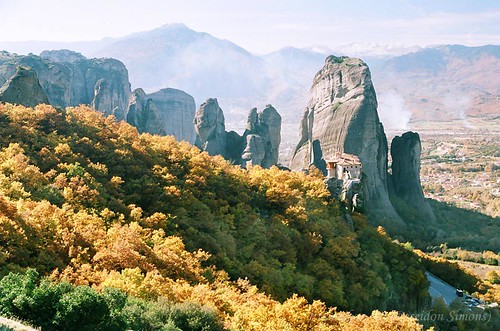
(image credit: Poseidon Simons)


(image credit: Adventurelogger)
The first monks occupied Meteora around 950-970 A.D. Apparently, they recognized the grand nature of the place. The fascinating shapes of the surrounding rocks were explained by Filipson, a German geologist. According to him, a few million years ago Meteora area was the estuary of a big river, accumulating silt into these cone structures. With the geographical uplift of the Central Greece, Thessaly became a big lake. Gradually, the Meteora rocks became detached from the Pindos Mountain chain, and with erosion, took the shapes we see today.
The Roussanou Monastery:
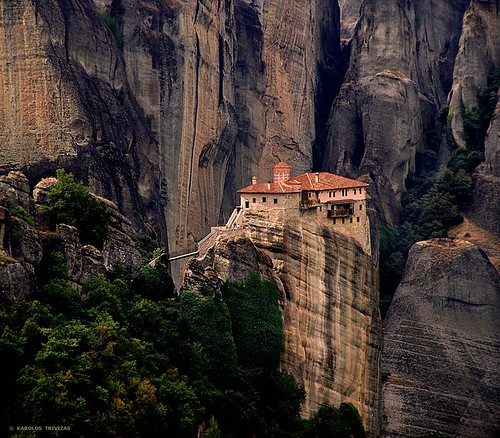
(images credit: Karolos Trivizas)

(image credit: Tomasz Moscicki)
View down the valley:
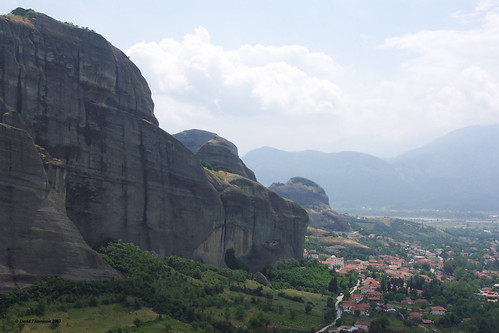
The monasteries were only accessible by baskets lifted by pulleys until the 1920's, when roads, steps and a bridge were built to accommodate more pilgrims and tourists.

(image credit: Magdalini Eirinaki)
Still it's quite a ways up to get inside any of the houses. Not a very friendly place to deliver groceries, but a great location for shooting dozens of James Bond movies.

(image credit: Greekvista.com)
Varlaam Monastery:
(all images by permission of Tom Dempsey)

Saint Nicholas Anapafsa Monastery:
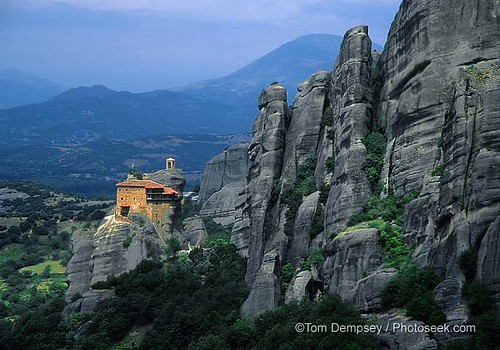
Grand Meteora Monastery:
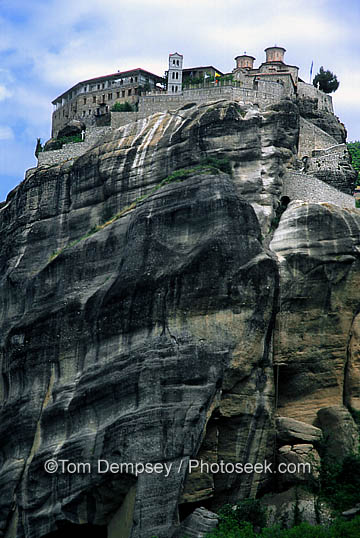
This area is also popular with rock climbers and one can imagine the tenacity of the first hermits who scaled the cliffs and inhabited the caves in search of solitude and spiritual awakening. A detailed history of this place can be found at Great Adventures.com.

(image credit: Ilias Kapetanakis)
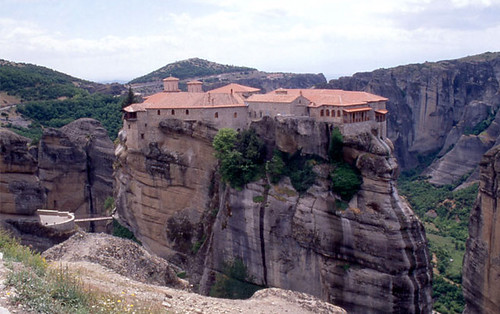
(image credit: odysseus.culture.gr)
The monks might not jump from cliff to cliff, but a dare-devil tourists would. It would certainly take a lot of faith :)
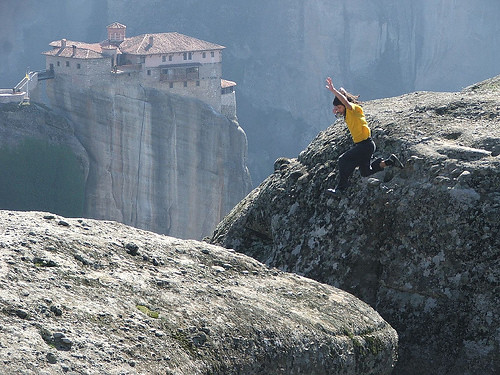
(image credit: Mr. Teklan)
4. Cave Monasteries of Cappadocia, Turkey
So we come to the most surreal landscape of them all - the fairy chimneys and hollow towers of Cappadocia area in Turkey - the land rich in history and spiritual heritage. According to wiki, "Cappadocia is mentioned in the Biblical account given in the book of Acts 2:9, with the Cappadocians being named as one of the people groups hearing the Gospel account from Galileans in their own language on the day of Pentecost shortly after the resurrection of Jesus Christ. Acts 2:5 seems to suggest that the Cappadocians in this account were "God-fearing Jews".
The Natural Rock Citadel of Uçhisar - is the highest peak in the region, and guess what, it is completely honeycombed with ancient dwellings. Many of these spaces were used as cave monasteries, though today they mostly inspire photographers and artists. Its honeycombed architecture is revealed by erosion and suggests intense fortification and infrastructure.
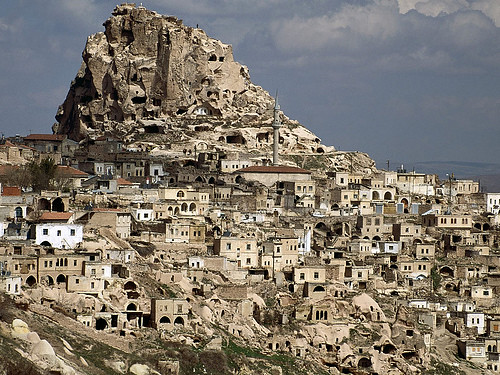
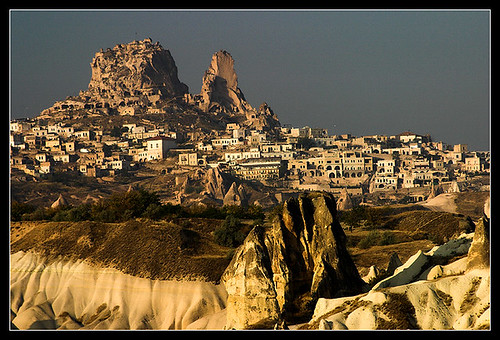
(image credit: Patryk Moriak)
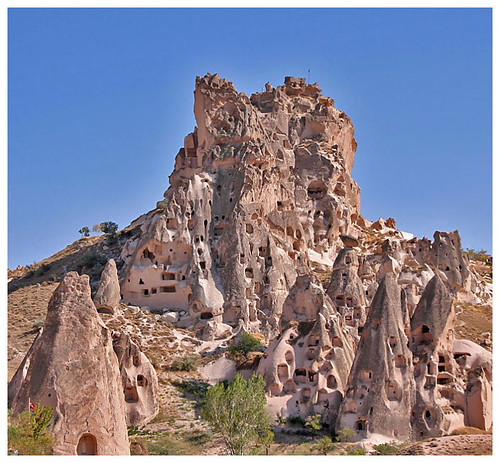
(image credit: CT Pehlivan)
Fairy Chimneys:
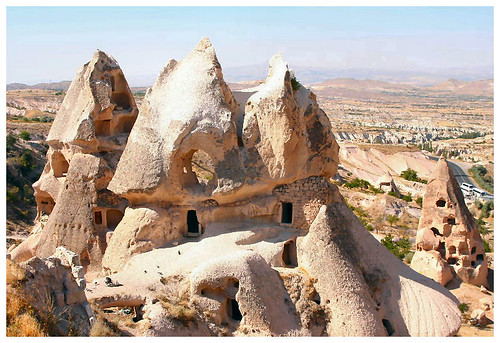
(image credit: CT Pehlivan)
We will cover more hard-to-access and precariously located monasteries in the next installment of this new series. But now you might be already asking yourself a question:
How far would you be willing to go to get your peace & quiet?
Some paths to sacred places require a special safety blessing. Take this bridge, for example:
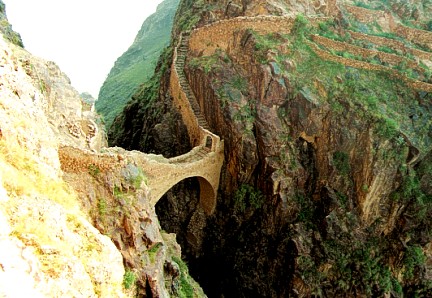
This Russian sign says it straight:
"Get a blessing before crossing this bridge"
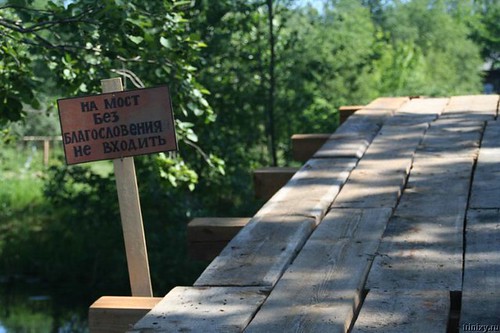
All the sheer walls and narrow winding paths behind you, once on the sacred ground, it can be truly inspiring:
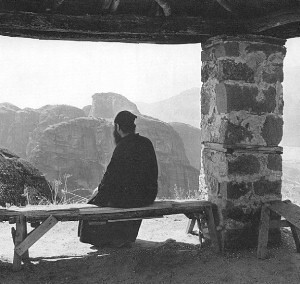
CONTINUE TO NEXT PART OF THIS ARTICLE
Permanent Link...

Category: Travel,Architecture
Related Posts:
Sumela Cliff Monastery in Turkey
Dark Roasted Blend's Photography Gear Picks:










0 comments:
Post a Comment